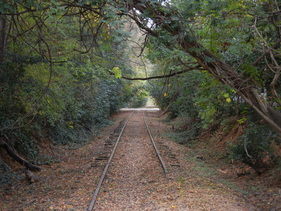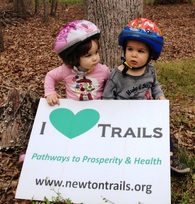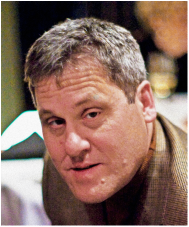"I'd love to change the world, but I don't know what to do.
So I'll leave it up to you."
-- Alvin Lee & Ten Years After, 1971
"I'd Love to Change the World"
Perhaps you're not out to change the world, or maybe you are. But, no matter what the mission, every organization seeks change on some level -- be it improving a community, transforming a culture, or altering market perceptions. Regardless of scale or motive, experience shows:
To change the world, change minds
To change minds, change hearts
To change hearts, change experiences
This dependency on experiences takes us back to something I mentioned at the end of my last post, which is "Tactical Urbanism." Authors and practitioners Mike Lydon & Anthony Garcia describe it as "neighborhood building and activation using short-term, low-cost, and scalable interventions and policies." Think of it in the same vein as "seeing is believing" or "actions speak louder than words.:
In Tactical Urbanism, business methods like Agile, Lean Startup, and Continuous Improvement are changing the game in public policy and community activism. Likewise, the success communities are having with these methods can reshape how businesses and non-profits pursue objectives. But, before we delve deeper, let's revisit the fundamentals of change to reinforce why showing is so much better than telling.
Changing Minds
To alter a situation, you must change people's minds. That's why we live in a world of debating ideas and people working to argue others over to "their side." On difficult issues like race relations, climate science, gun control, gay marriage, and economic policy, we're barraged by arguments from many viewpoints. Yet, how many people really change their opinion through this reasoning? Very few.
Changing Hearts
To change minds, you must change hearts. Even with an advanced ability to reason, human decision making is governed by emotions. We accept this, but generally only to the extent we perceive it as lack of intellectual maturity in others. A temporary inconvenience to overcome -- with yet more reasoning.
But, as neurologist Antonio Damasio showed in his 1994 book Descartes' Error: Emotion, Reason, and the Human Brain, the role of emotion in human reasoning is more hardwired than we realize. Damasio illustrates this using case studies of brain-damaged individuals who've lost connection between the rational and emotional parts of their brains. Without access to feelings, these individuals are unable to make even basic everyday decisions using only data.
Arguing with facts is pointless if your information conflicts with the emotional reaction in others. When fear, anxiety, anger, or suspicion are present, all data to the contrary is of little to no significance.
To change the world, change minds
To change minds, change hearts
To change hearts, change experiences
This dependency on experiences takes us back to something I mentioned at the end of my last post, which is "Tactical Urbanism." Authors and practitioners Mike Lydon & Anthony Garcia describe it as "neighborhood building and activation using short-term, low-cost, and scalable interventions and policies." Think of it in the same vein as "seeing is believing" or "actions speak louder than words.:
In Tactical Urbanism, business methods like Agile, Lean Startup, and Continuous Improvement are changing the game in public policy and community activism. Likewise, the success communities are having with these methods can reshape how businesses and non-profits pursue objectives. But, before we delve deeper, let's revisit the fundamentals of change to reinforce why showing is so much better than telling.
Changing Minds
To alter a situation, you must change people's minds. That's why we live in a world of debating ideas and people working to argue others over to "their side." On difficult issues like race relations, climate science, gun control, gay marriage, and economic policy, we're barraged by arguments from many viewpoints. Yet, how many people really change their opinion through this reasoning? Very few.
Changing Hearts
To change minds, you must change hearts. Even with an advanced ability to reason, human decision making is governed by emotions. We accept this, but generally only to the extent we perceive it as lack of intellectual maturity in others. A temporary inconvenience to overcome -- with yet more reasoning.
But, as neurologist Antonio Damasio showed in his 1994 book Descartes' Error: Emotion, Reason, and the Human Brain, the role of emotion in human reasoning is more hardwired than we realize. Damasio illustrates this using case studies of brain-damaged individuals who've lost connection between the rational and emotional parts of their brains. Without access to feelings, these individuals are unable to make even basic everyday decisions using only data.
Arguing with facts is pointless if your information conflicts with the emotional reaction in others. When fear, anxiety, anger, or suspicion are present, all data to the contrary is of little to no significance.

I learned this a few years ago trying to persuade my community to acquire an inactive railroad corridor to convert into a walking and biking trail.
Opponents were quick to fill newspapers and public meetings with allegations about crime, drug use, murder, rape, and "all manner of evil that man can think of" they claimed would accompany such an undertaking. I and others responded with mountains of data to counter those fears -- including testimonials from law enforcement, elected officials, and adjacent landowners along trails in other communities. But, our rational argument missed the mark by failing to address emotions already stirred.
When I look back through news accounts and opinion pieces from that time, even I'm struck by the in-your-face, visceral arguments against the trail. Our fact-filled, pro-trail arguments were simply no match for the intense emotions aroused against us.
We eventually wised up and came back to the emotions driving our desire to see a rail trail built. We refocused from combating fear mongering to emphasizing the positive emotional connection of excited young people and active families using our trails. We celebrated uplifting stories of people making healthy changes in their lives by getting outdoors and becoming physically active.
Changing Experiences
Opponents were quick to fill newspapers and public meetings with allegations about crime, drug use, murder, rape, and "all manner of evil that man can think of" they claimed would accompany such an undertaking. I and others responded with mountains of data to counter those fears -- including testimonials from law enforcement, elected officials, and adjacent landowners along trails in other communities. But, our rational argument missed the mark by failing to address emotions already stirred.
When I look back through news accounts and opinion pieces from that time, even I'm struck by the in-your-face, visceral arguments against the trail. Our fact-filled, pro-trail arguments were simply no match for the intense emotions aroused against us.
We eventually wised up and came back to the emotions driving our desire to see a rail trail built. We refocused from combating fear mongering to emphasizing the positive emotional connection of excited young people and active families using our trails. We celebrated uplifting stories of people making healthy changes in their lives by getting outdoors and becoming physically active.
Changing Experiences

To tap into those good emotions, we had to bring people a different experience. Instead of fear and uncertainty, we needed them to see the smile on a child's face biking down a trail. We needed them to hear the laughter and feel the warmth of a father strolling with a young son perched on his shoulders while a mother walks alongside her daughter loosely holding hands.
In time, we were fortunate to get a different, shorter trail built in our community. It quickly became a place where anyone could experience such scenes any day of the year. And, that experience changed hearts and minds, keeping alive the potential for acquiring the rail corridor for a longer trail.
Too Much, Too Late?
But, that shorter trail took 10 years to fund, design, and build. It almost didn't happen and was nearly too late to change community perception before the inactive rail line was abandoned and the opportunity lost forever. Something quicker and cheaper would have served our needs much better.
In my next post, I'll explain "Tactical Urbanism" -- a set of interventions community leaders and activists are using to create positive experiences faster and at a lower initial cost to gain traction for long-term change. It's an approach with relevance for any organization or cause.
In time, we were fortunate to get a different, shorter trail built in our community. It quickly became a place where anyone could experience such scenes any day of the year. And, that experience changed hearts and minds, keeping alive the potential for acquiring the rail corridor for a longer trail.
Too Much, Too Late?
But, that shorter trail took 10 years to fund, design, and build. It almost didn't happen and was nearly too late to change community perception before the inactive rail line was abandoned and the opportunity lost forever. Something quicker and cheaper would have served our needs much better.
In my next post, I'll explain "Tactical Urbanism" -- a set of interventions community leaders and activists are using to create positive experiences faster and at a lower initial cost to gain traction for long-term change. It's an approach with relevance for any organization or cause.

 RSS Feed
RSS Feed